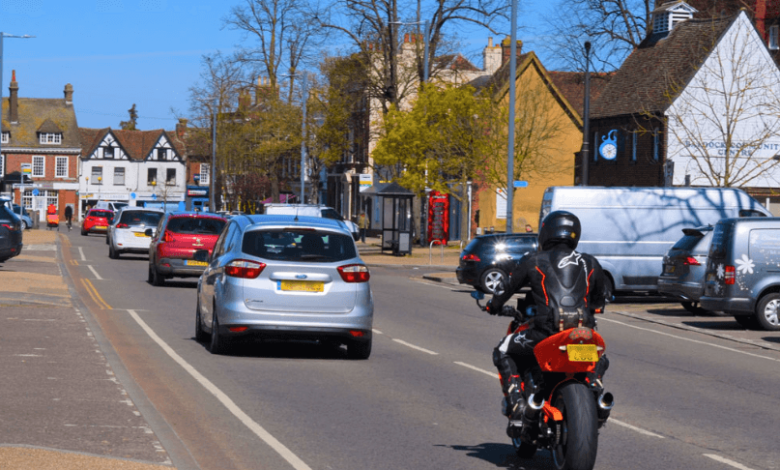Potholes Ahead: How Bad Roads Put Lives at Risk

When you think about road safety, the first things that may come to mind are distracted drivers, speeding, or poor weather conditions. But one silent threat often overlooked is the condition of the road itself. Across cities, suburbs, and rural areas, potholes, cracks, and uneven pavement present dangers that go beyond inconvenience. Poor road conditions not only damage vehicles but also put lives at risk. Let’s explore how bad roads impact safety, why they’re so dangerous, and what can be done to address the problem.
The Hidden Dangers of Poor Roads
A pothole may look like a minor nuisance, but it can cause major problems. When a driver suddenly hits or swerves to avoid one, the results can be severe:
- Loss of control: Unexpected jolts can cause drivers to veer into other lanes or pedestrians.
- Vehicle damage: Hitting potholes can cause blown tires, bent rims, suspension problems, and even cracked windshields—often requiring repairs or windshield replacement in Tooele—leading to dangerous breakdowns in traffic.
- Motorcycle and bicycle risks: For riders on two wheels, even a small pothole can result in a life-threatening accident.
Beyond potholes, other conditions like faded lane markings, broken guardrails, and poor drainage contribute to crashes. Bad roads essentially turn safe driving into a game of chance.
How Poor Road Conditions Lead to Accidents
Bad roads create a chain reaction that increases accident risks:
- Sudden Maneuvers: Drivers instinctively swerve to avoid potholes, often without checking blind spots. This can cause collisions with nearby vehicles.
- Increased Stopping Distance: Roads with cracks, gravel, or uneven pavement reduce tire traction, making it harder to stop in emergencies.
- Reduced Visibility: Poorly maintained roads often lack reflective paint or signage, leaving drivers disoriented at night or in bad weather.
- Unexpected Breakdowns: Vehicle damage caused by potholes—like tire blowouts—can force cars to stop in unsafe areas, increasing the risk of rear-end collisions.
In fact, research by transportation safety organizations has shown that poor road conditions contribute to thousands of accidents each year, costing lives and billions in damages.
See also: The Impact of Technology on Privacy Laws and Regulations
The Human Cost of Bad Roads
Behind every statistic is a real story: a motorcyclist thrown off balance, a family minivan suffering a tire blowout on the highway, or a pedestrian struck because a driver swerved to dodge a pothole. The truth is that unsafe roads don’t discriminate—they impact everyone, regardless of whether you’re walking, cycling, or driving.
For vulnerable road users like bicyclists and motorcyclists, the risks are magnified. While a pothole may leave a car with a dented rim, it can throw a cyclist onto the pavement with catastrophic consequences.
The Economic Toll
The dangers of poor road conditions aren’t just about safety—they also drain wallets. According to transportation studies, American drivers spend hundreds of dollars annually on car repairs linked to bad roads. Tires, suspension systems, and wheel alignments are the most common casualties.
Beyond personal expenses, communities also pay a price. Accidents caused by poor infrastructure lead to higher insurance claims, lost productivity, and increased emergency response costs. In the long run, investing in road maintenance saves money compared to paying for the fallout of neglect.
What Can Be Done?
The solution lies in proactive maintenance and awareness. Here are key steps that make a difference:
- Timely Repairs: Municipalities must prioritize filling potholes and resurfacing roads before problems escalate.
- Better Funding: Infrastructure budgets should focus not just on building new roads but also on maintaining existing ones.
- Public Reporting: Many cities now offer apps or hotlines for residents to report dangerous road conditions, speeding up repairs.
- Driver Awareness: Motorists should report hazards and stay alert, especially in areas known for poor road conditions.
Collaboration between communities, governments, and drivers is essential to prevent road defects from turning into deadly hazards.
Staying Safe on Bad Roads
While drivers can’t fix potholes themselves, they can reduce risks by:
- Maintaining safe speeds to react to road hazards.
- Leaving extra space between vehicles in case of sudden swerves.
- Keeping tires properly inflated for better traction.
- Reporting dangerous road conditions to local authorities.
In Conclusion
Poor road conditions may not make headlines as often as reckless driving or distracted texting, but their dangers are just as real. Potholes and poorly maintained roads can turn an ordinary commute into a life-threatening situation in seconds. By raising awareness, demanding accountability, and practicing safe driving habits, we can all play a role in making roads safer.
Next time you see a pothole, don’t just think of it as an inconvenience—recognize it as a hazard that needs urgent attention. Because when roads fail, lives are truly at risk.



